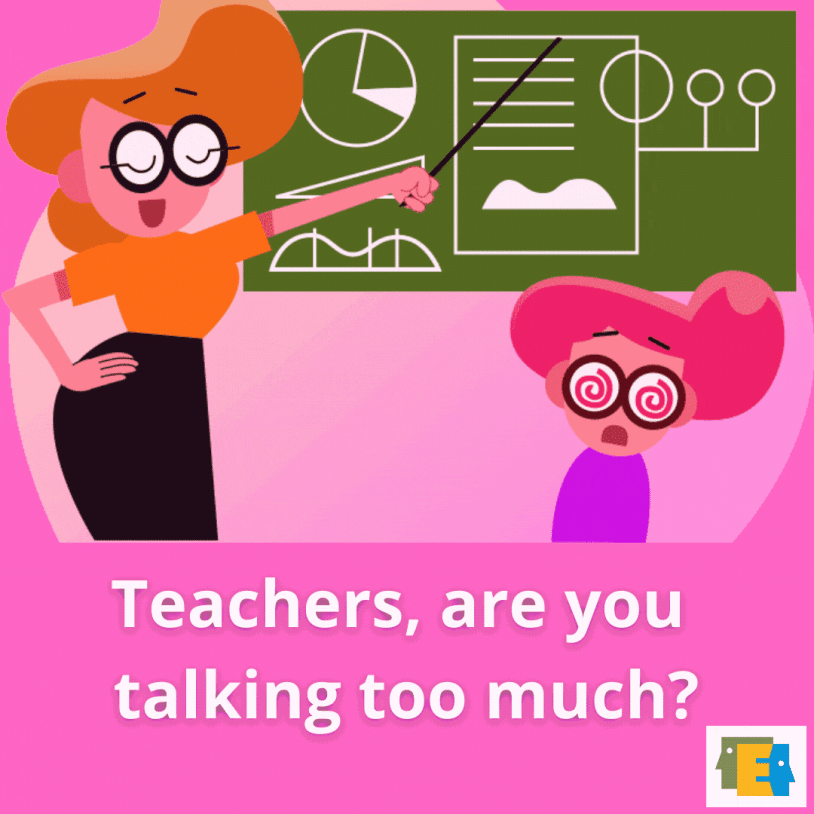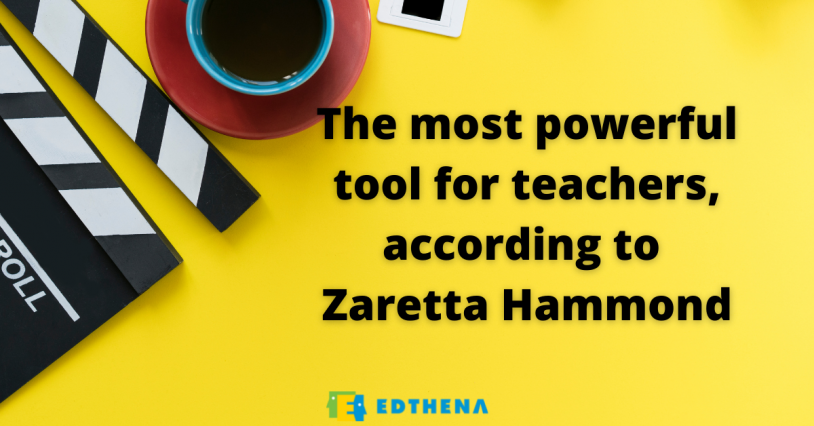Zaretta Hammond Says to Try This Powerful Tool for More Classroom Equity
Many educators are looking for the best techniques to implement for more equitable classrooms. But according to Zaretta Hammond, a culturally responsive teaching expert, it’s not about any single technique.
Rather, it’s about the systems that teachers put in place to analyze their teaching to make it more equitable.
It’s no surprise, therefore, that Zaretta said using video is the best tool to better understand your classroom and own instruction, and to critically assess your culturally responsive practices.
“Video: There is no more powerful tool that we could be using in the service of equity,” Zaretta Hammond told us.
The Culturally Responsive Teaching and the Brain author discussed why video is so helpful and two ways to use it for stronger student outcomes in the classroom in this PLtogether Lounge Talk with Edthena founder and CEO Adam Geller.
Watch the interview above, or continue reading for highlights of the conversation, including how to use video to monitor teacher talk time or foster students’ productive struggle.
Teachers, do you really know what’s going on during your lessons?
Video as a tool is like a neutral observer. It shows us exactly what happened, such as during a classroom lesson.

In this way, video supports teachers in seeing any discrepancies between what they think happened and what really did, and with zero judgment.
“When you look at the video, you can do your own gap analysis,” shared Zaretta Hammond.
For example, teachers often reflect back on videos and realize they were talking for much longer than they thought during the moment.
And according to Zaretta Hammond, “Whoever’s doing the talking, is doing the learning, and we want kids to do more of that.”
Being able to videotape a lesson and look back, like in Edthena, gives a more accurate picture of how much students were actually engaged in classroom discussion and activity.
Zaretta noted that being an equity-focused educator means shifting more of the opportunity to talk in class to students.
With video evidence, teachers can use techniques such as setting timers to monitor their talk time, or other talk protocols, to steadily increase opportunities for student talk time.
Use video to create more opportunities for your students’ productive struggle
Recording video isn’t just about teachers seeing themselves. It’s also about teachers seeing students.
One important type of student interaction that is beneficial to record and watch back for further insight is when students are engaging in productive struggle.
Talking about releasing content or objectives to students, Zaretta said that patterns of student compliance and over-scaffolding lead to students “expecting you to come in and rescue them.” This dilutes true student learning.
Video can make the difference here to help teachers understand better how to guide, or not guide, students.
“You can actually see those behaviors [in students] and move them away from the compliance-oriented behaviors,” Zaretta Hammond shared.
Here are some key things to look for when doing a video reflection of your students’ productive struggle:
- Where to release material to students
- When to loosen up lesson scaffolding and teacher-driven supports
- Noting the difference between productive struggle and confusion
Getting anxious when students are grappling with a concept and not being able to step in?
“[Video] allows you to desensitize yourself to ‘this feels chaotic,’ when it’s actually productive,” Zaretta Hammond told us.
In addition, sharing the video with students is also a great idea.
“Helping students see themselves in that [productive struggle] becomes powerful. … just like football players and baseball players look at their game tape,” said Zaretta.
This helps students with their metacognition around what moves they can employ to help themselves in their learning.
Zaretta Hammond says video is key for teachers assessing their classroom instruction
The themes to all of Zaretta’s suggestions for video usage revolve around the idea that you can’t improve something you can’t see.
Zaretta Hammond emphasized, “Video will be your critical friend, and tell you the truth in ways that our brains selectively won’t all the time.”
Teachers have the important role of acting as personal trainers of students’ cognition. But often in the classroom, things happen quickly and it can be unclear how much learning took place.
“When we step back and use something like video, audio clips, low inference transcripts … we get a better snapshot of what’s really happening in our class,” Zaretta Hammond underscored.
Zaretta continued, “And it’s when we understand what’s going on, that we actually can make the changes, the small tweaks, the big shifts, that are really necessary to move students toward that place where they’re being the leaders of their own learning.”
Especially when a teacher is new to the classroom or to the content they’re teaching, classrooms move at a quick pace. To improve instructional decision-making, educators must take the time to step back and watch what happened.
Want to learn more about other ways to use video to improve your teaching? We have 10 Ways to Use Video Reflection within Teacher Professional Learning.


